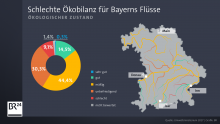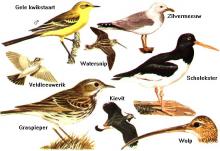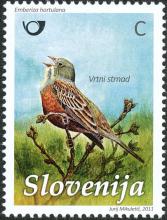Viele bayerische Flüsse und Bäche bedroht
Nur rund 15 Prozent der Flüsse und Bäche in Bayern sind in einem guten bis sehr guten ökologischen Zustand. Das bedeutet: Hier gedeihen Wasserpflanzen, Fische, aber auch Insektenlarven. 85 Prozent dagegen bekommen die Bewertung: mäßig, unbefriedigend bis schlecht. Die Einteilung in die unterschiedlichen Kategorien gilt EU-weit. Die Zahlen aus Bayern entstammen der Broschüre "Gewässer in Bayern" aus dem Jahr 2017, auf sie hat sich auf BR-Nachfrage heute das Bayerische Landesamt für Umwelt berufen.










